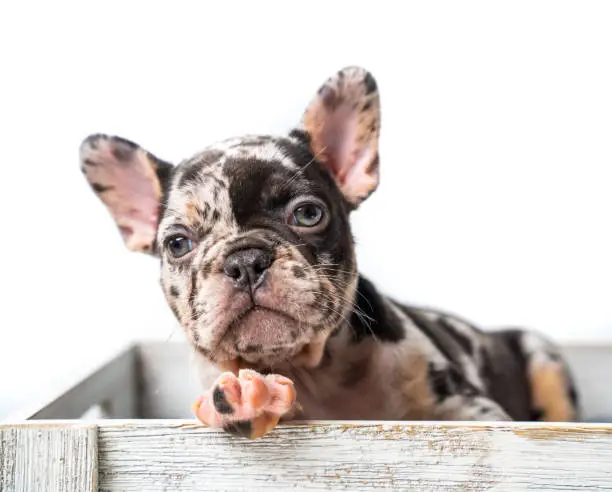Introduction
The Mini Australian Labradoodle is a small, intelligent, and affectionate breed that has won the hearts of dog lovers worldwide. Known for their curly coats, friendly personalities, and hypoallergenic qualities, these dogs make excellent family pets, therapy dogs, and companions. Whether you’re looking for a loyal friend or an energetic playmate, the Mini Labradoodle checks all the boxes.
In this guide, we’ll explore everything you need to know about this lovable breed, including their history, temperament, grooming needs, training tips, and more.
History and Origin
The Labradoodle was first bred in the 1980s in Australia when a Royal Guide Dog Association breeder attempted to create a hypoallergenic service dog. This breed was a mix of a Labrador Retriever and a Poodle, combining the intelligence and trainability of both breeds.
Over time, breeders refined the Labradoodle by adding Cocker Spaniels and other breeds to create the Australian Labradoodle. The Mini Australian Labradoodle is a smaller version, typically developed by breeding a Miniature or Toy Poodle with an Mini Labradoodle, making them even more manageable for smaller homes and apartments.
Physical Characteristics
Size and Weight
Mini Australian Labradoodle are smaller than their standard counterparts. They typically weigh 15-30 pounds and stand 14-17 inches tall at the shoulder.
Coat Types and Colors
One of the most attractive features of the small labradoodle is its coat. They have soft, wavy, or curly coats that are often hypoallergenic, making them great for allergy sufferers. Their coat colors range from:
- Chocolate
- Apricot
- Cream
- Black
- Red
- Parti (two-tone)
Lifespan
With proper care, Mini Australian Labradoodles live 12-15 years, making them a long-term companion for any family.
Personality and Temperament
The Mini Aussie Labradoodle is friendly, intelligent, and affectionate. They are incredibly social and love being around people and other pets.
Key Personality Traits:
- Playful & Energetic – These dogs love playing fetch, running, and exploring.
- Highly Intelligent – They are easy to train and eager to please.
- Affectionate & Loyal – They form strong bonds with their families.
- Great with Kids & Pets – They are gentle and friendly with children and other animals.
Their gentle nature makes them great therapy dogs and companions for people with disabilities or anxiety.
Health and Common Issues
Like all breeds, Mini Australian Labradoodles are prone to some health conditions.
Common Health Concerns:
- Hip Dysplasia – A genetic condition affecting the hip joints.
- Progressive Retinal Atrophy (PRA) – A degenerative eye disease leading to blindness.
- Ear Infections – Their floppy ears can trap moisture, leading to infections.
- Allergies – Some dogs may have skin or food allergies.
How to Keep Them Healthy:
- Regular Vet Checkups – Early detection can prevent serious health issues.
- Balanced Diet – High-quality food keeps their coat shiny and skin healthy.
- Exercise – Prevents obesity and keeps their joints strong.
- Ear Cleaning – Reduces the risk of infections.
Exercise and Activity Needs
Mini Australian Labradoodles are high-energy dogs that need regular physical and mental stimulation.
Exercise Requirements:
- At least 30-60 minutes of daily exercise
- Activities like walks, fetch, agility training, and swimming
- Puzzle toys and interactive games to keep their minds engaged
Lack of exercise can lead to boredom and destructive behavior, so keeping them active is crucial!
Grooming and Maintenance
Proper grooming keeps their coat healthy and reduces shedding.
Coat Care:
- Brush 3-4 times a week to prevent tangles and mats.
- Professional grooming every 6-8 weeks.
Bathing & Hygiene:
- Bathe once a month with a gentle dog shampoo.
- Clean ears regularly to prevent infections.
Nail & Dental Care:
- Trim nails every 3-4 weeks.
- Brush teeth daily or at least 3 times a week to avoid dental issues.
Training and Socialization
Mini Australian Labradoodles are highly trainable but need consistent training.
Training Tips:
- Start potty training and obedience training early.
- Use positive reinforcement (treats and praise).
- Socialize them with other dogs and people early on.
- Be patient—consistency is key!
If left untrained, they can develop separation anxiety or unwanted behaviors.
Diet and Nutrition
Feeding your Mini Aussie Labradoodle a balanced diet is essential for their health and longevity. Their diet should consist of high-quality proteins, healthy fats, and essential vitamins.
Best Food for Mini Australian Labradoodles:
- High-protein kibble with real meat as the first ingredient (chicken, turkey, salmon, or beef).
- Grain-free options if they have sensitivities.
- Fresh vegetables and fruits (carrots, blueberries, pumpkin) for extra nutrients.
- Omega-3 and Omega-6 fatty acids to support coat health.
Feeding Schedule & Portion Control:
- Puppies (8-12 weeks): 4 small meals per day
- 3-6 months: 3 meals per day
- 6+ months & Adults: 2 meals per day
Overfeeding can lead to obesity, so always measure portions and avoid excessive treats.
Living Environment
Mini Australian Labradoodles adapt well to different living situations, but they thrive in homes where they get plenty of attention and exercise.
Best Home Setups:
- Houses with fenced yards are ideal for playtime.
- Apartments are fine if they get daily walks and mental stimulation.
- They do best with active families or owners who work from home.
Can They Live in Apartments?
Yes, but they need regular exercise and interaction to prevent boredom. A bored mini Labradoodle may bark excessively or become destructive.
Adoption vs. Buying from a Breeder
Before bringing home a Mini Labradoodle, decide whether to adopt or buy from a breeder.
Adoption:
- Check rescue organizations and shelters for available dogs.
- Adoption fees are lower than breeder prices.
- Provides a dog with a second opportunity for a caring home.
Buying from a Breeder:
- If choosing a breeder, ensure they are ethical and reputable.
- Ask about health screenings for genetic conditions.
- Expect to pay between $1,500 – $3,000 for a well-bred puppy.
Cost of Ownership
Owning a Mini Aussie Labradoodle comes with ongoing expenses.
Initial Costs:
| Expense | Estimated Cost |
|---|---|
| Puppy Price | $200-$500 |
| Initial Vet Visits & Vaccines | $200 – $500 |
| $100-$300 | $200 – $600 |
| Dog Bed, Crate, Toys | $100 – $300 |
Monthly Expenses:
| Expense | Estimated Cost |
|---|---|
| Food | $40 – $80 |
| Grooming | $20-$50 |
| Vet Checkups | $50-$100 |
| Training & Socialization | $50 – $100 |
Over their lifetime, you could spend $15,000 or more on care, so be sure you’re financially ready for the commitment.
Traveling with mini australian labradoodle
Mini Australian Labradoodles are great travel companions if trained properly.
Car Travel Tips:
- Use a dog car seat or seatbelt harness for safety.
- Bring a travel water bowl and snacks.
- Make frequent stops for bathroom breaks.
Flying with a Mini Australian Labradoodle:
- Check airline pet policies before booking.
- Some Mini Labradoodles can travel in the cabin if they fit under the seat.
- Use a soft-sided airline-approved carrier.
Fun Facts About Mini Australian Labradoodles
- They are excellent for allergy patients because they are hypoallergenic.
- Their intelligence makes them excellent therapy dogs.
- Celebrities like Jennifer Aniston and Tiger Woods own Labradoodles.
- They are often called “forever puppies” because of their youthful look.
FAQs
1. Are Mini Australian Labradoodles hypoallergenic?
Yes, they are considered hypoallergenic due to their Poodle ancestry. However, no dog is 100% allergen-free.
2. Do Mini Australian Labradoodles bark a lot?
They are not excessive barkers, but they may bark when bored or alerting their owners.
3. How long do Mini Australian Labradoodles live?
If given the right care, they usually live for 12 to 15 years.
4. Are Mini Australian Labradoodles easy to train?
Yes! They are highly intelligent and eager to please, making training easy and fun.
5. Can Mini Australian Labradoodles be left alone?
They can handle short periods alone, but they thrive on human interaction. Separation anxiety might result from spending a lot of time alone.
Conclusion
The Mini Australian Labradoodle is an affectionate, intelligent, and low-shedding breed, making it a great pet for a wide range of owners. They are playful, social, and easy to train but require regular exercise and grooming.
If you’re looking for a loyal, loving companion, the Mini Labradoodle is an excellent choice. However, be prepared for the commitment of training, exercise, and care to ensure a happy, healthy pup.


